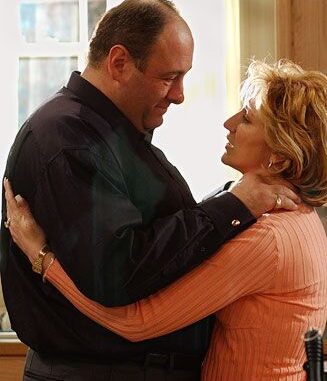
In the world of television and film, few shows have had as lasting an impact as The Sopranos. With its complex characters and gritty realism, it has left a mark on popular culture that resonates even today. Recently, an alum from this iconic series has stirred the pot by taking a strong stand against trigger warnings—a topic that has sparked heated debates in academic and entertainment circles alike. But why are trigger warnings so controversial? And what exactly did this Sopranos star say? In this article, we’ll explore these questions and more as we unpack the complexities of trigger warnings and their implications in society.
What Are Trigger Warnings?
Understanding Trigger Warnings
Trigger warnings are alerts provided before content that may evoke strong emotional responses, especially for individuals who have experienced trauma. They serve to prepare the audience for potentially distressing material, allowing them to make informed decisions about their engagement with that content.
The Purpose Behind Trigger Warnings
The intent behind trigger warnings is noble: to protect those who may suffer psychological distress from specific topics, such as violence, sexual assault, or mental health issues. However, not everyone agrees on their necessity or effectiveness.
The Sopranos Connection
Who Is the Sopranos Alum?
The alum in question is none other than Michael Imperioli, who famously portrayed Christopher Moltisanti in The Sopranos. Recently, he has voiced his concerns about the prevalence of trigger warnings in the entertainment industry, suggesting they could stifle creativity and artistic expression.
Michael Imperioli’s Viewpoint
In interviews, Imperioli has expressed that while he understands the importance of being sensitive to viewers’ experiences, he believes trigger warnings may lead to a culture of censorship. He argues that art should provoke thought and discussion, even if it makes some viewers uncomfortable.
The Censorship Argument
Is It Censorship?
Critics of trigger warnings argue that they create an environment where artists are overly cautious, leading to self-censorship. In an age where discussions about mental health and trauma are increasingly prevalent, can we afford to limit artistic expression?
Art’s Role in Society
Art has always played a pivotal role in reflecting society’s struggles and triumphs. It pushes boundaries and challenges norms. When creators start to second-guess their work due to fear of backlash from trigger warnings, we risk losing important narratives that could foster understanding and empathy.
The Impact on Audience Experience
How Trigger Warnings Affect Viewers
For some, trigger warnings can provide a necessary heads-up. They appreciate the option to prepare themselves for intense scenes or themes. However, for others, these warnings may unintentionally amplify their anxiety, focusing attention on the very subjects they wish to avoid.
Personal Responsibility and Content Consumption
The conversation raises the question of personal responsibility. Should viewers actively choose what to watch based on their experiences, or should creators take on the burden of warning audiences? There’s a fine line between protecting individuals and allowing them to engage with challenging material in a healthy way.
The Rise of Trigger Warnings in Academia
Trigger Warnings in Educational Settings
The trend of using trigger warnings has expanded beyond entertainment into academia. Many universities have begun implementing them in course syllabi to alert students to potentially distressing content in readings and discussions.
Academic Freedom vs. Student Safety
This raises another dilemma: How do we balance academic freedom with the safety and well-being of students? While it’s crucial to create a supportive learning environment, can we also risk diluting the rigor of education by censoring discussions?
Balancing Sensitivity with Authenticity
Finding Common Ground
The dialogue around trigger warnings is ongoing, with many seeking a balance between sensitivity to trauma survivors and the need for authentic artistic expression. There’s no one-size-fits-all solution, but open conversations can lead to greater understanding and collaboration.
The Role of Dialogue in Art and Education
Encouraging dialogue around difficult subjects can empower both creators and audiences. When artists and viewers engage in discussions about challenging themes, it fosters a culture of openness and learning rather than one of fear and avoidance.
The Future of Trigger Warnings
Are Trigger Warnings Here to Stay?
As society continues to grapple with mental health awareness and trauma, trigger warnings may remain a topic of debate. Whether you agree with their usage or not, it’s essential to recognize their role in shaping conversations around mental health and artistic freedom.
Evolving Perspectives
As more voices join the conversation—like Michael Imperioli’s—the dialogue will evolve. It’s crucial to remain open-minded and consider various perspectives to foster a richer understanding of this complex issue.
Conclusion: The Call for Open Conversations
The stand taken by Michael Imperioli against trigger warnings serves as a reminder of the ongoing dialogue surrounding mental health and artistic expression. As we navigate the delicate balance between sensitivity and authenticity, it’s essential to keep the conversation alive. We need to create spaces where both creators and audiences can discuss their experiences and feelings without fear of backlash. Ultimately, the goal should be to encourage understanding, empathy, and artistic integrity.
